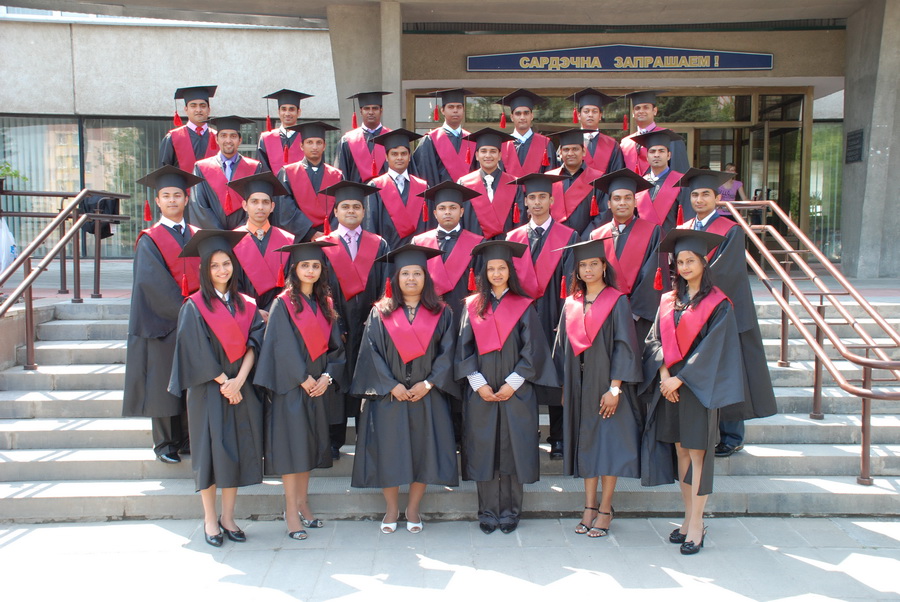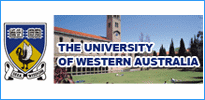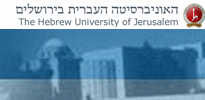
Primary Education
Education in Belarus is free and compulsory from age 6 to 15 and the system is well administered. From age 6 to 10 children attend primary school where they receive a basic grounding in literacy and numeracy.
Middle Education
Thereafter pupils go on to basic secondary school for 5 years culminating in a certificate of basic education at age 15. The curriculum continues to be academically based and universal across the national.
Secondary Education
When students enter senior secondary school level they are faced with a raft of choices regarding the route of education they wish to take. They may remain in the academic stream for 3 years at gymnasiums. They may attend vocational classes at lyceums for 2 years. Or they may train at a strictly practical level at colleges and obtain a trade.
Vocational Education
A network of institutions throughout Belarus provides refresher courses and reskilling opportunities in a country where ongoing education remains a priority. Fees are charged and there is little central control.
Tertiary Education
In Belarus there are 44 state controlled tertiary institutions, namely 31 universities, 6 academies, 2 institutes, and 4 higher colleges. In total about 300,000 students are enrolled.
The most venerable is the Belarusian State University established in 1921. Its 17 faculties present a wide range of educational opportunities and these do not include a range of educational and scientific research institutes. There are approximately 5000 students there.
Education System in Belarus

Education in Belarus is free at all levels including higher education. The government ministry that overseas the running of the school systems is the Ministry of Education of the Republic of Belarus. Each of the regions inside Belarus have oversight of the education systems, and students have the ability to attend either a public (state) or a private school. The current structure of the educational system was established by decree in 1994.
Pre-High Education
Education in primary and secondary schools are required for children from the ages of six until fifteen. After finishing basic education, each student is given a certificate by the state and is able to enter the workforce of serve in the military. Students do have the option of going for a higher education or train in a vocational school; the length of the schooling depends on what the student has chosen.
STRUCTURE OF EDUCATION SYSTEM
Pre-higher education:
Duration of compulsory education:
Age of entry: 6
Age of exit: 15
Structure of school system:
Primary
Type of school providing this education: Primary School
Length of program in years: 4
Age level from: 6 to: 10
Basic
Type of school providing this education: Basic Secondary School
Length of program in years: 5
Age level from: 10 to: 15
Certificate/diploma awarded: Svidetel'stvo o Bazovom Obrazovanii (Certificate of Basic Education)
General Secondary
Type of school providing this education: Gymnasium, Lyceum, College
Length of program in years: 2
Age level from: 15 to: 17
Certificate/diploma awarded: Attestat o Srednem Obrazovanii (Certificate of Secondary Education)
Specialized Secondary
Type of school providing this education: Specialized Secondary School (Technicum)
Length of program in years: 4
Age level from: 15 to: 19
Certificate/diploma awarded: Diplom o Srednem Spetsialnom Obrazovanii (Diploma of Specialized Secondary Education)
Vocational
Type of school providing this education: Vocational School
Length of program in years: 3
Age level from: 15 to: 18
Certificate/diploma awarded: Diploma of Vocational Education (duration of studies 1 to 3 years depending on previous education: if after secondary school, only 1 year)
School education:
School education is divided into three levels: primary (4 years), basic (9 years) and secondary (11 years). A child can be admitted to school at 6 or 7 years of age. Primary education is given in primary schools, 1-4 grades in secondary schools and 1-4 grades in gymnasiums. Basic education is compulsory for all children. It is provided in basic schools, 5-9 classes of secondary schools and 5-9 classes of gymnasiums. At the end of basic education, a Certificate of Basic Education is awarded.9th grade graduates have three possibilities: 1) Third stage of school education (10-11th grades); 2) Vocational/technical establishments; 3) Technicums. In secondary education, pupils continue to study in secondary schools 10-11th grades, grammar schools or lyceums. School-leavers are given a Certificate of Secondary Education.General secondary education is provided by general secondary schools, gymnasiums, lyceums and colleges, as well as in first courses of specialised and technical schools. Gymnasiums provide general secondary education at a higher level. Lyceums provide vocationally-oriented education that completes general secondary education. As a rule, lyceums use the teachers and educational facilities of universities and research institutes. Colleges provide general secondary education that is strongly oriented towards vocational training and award qualifications of "special secondary education". Vocational and technical education are provided by schools where students acquire professional and vocational skills together with general secondary education. Vocational and technical education complement the basic (9 years) education and general secondary education (11 years). In the former case, training lasts for three years and leads to a particular trade. In the latter case, training lasts for one year and leads to students acquiring a trade. At present, there are 249 vocational-technical schools. Specialized secondary education lasts for two to four years depending on whether students have followed basic or general secondary education. Specialized secondary education establishments include technicums, technical schools and colleges. Colleges are a new type of institution in Belarus. They provide advanced specialist training. At present, there are 149 state specialized secondary education institutions, 55 technicums, 41 colleges, 53 intermediate occupational education institutions, 5 higher colleges and 7 non state specialized secondary education institutions. A General Secondary School Reform is being implemented. The new model of general secondary education will include three levels: 1-4 years of study (preparatory 1-3 classes) - primary general education; 5-10th years (4-9 classes) - basic general secondary education; 11-12th years of study (10-11 classes) - complete general secondary education. The new curriculum includes 17 teaching courses instead of 24-27. The maximum study load is from 30 to 40 class hours per week in basic and senior school stages. It is planned to make the third stage of secondary education a lyceum one with two-year periods of study corresponding to classes 10 and 11. It is planned to introduce 5 types of lyceums and gymnasiums: general, humanistic, scientific, artistic and polytechnic. The certificate of lyceum education gives right of admission to any higher education institution. In 2001/02 there were 86 gymnasiums, 25 lyceums and 5 colleges.
Higher education:
The Belarussian system of higher education includes educational, research and governing institutions that use unified official standards and rules in the processes of teaching, management, assessment and research. Higher education is provided by public (State) and private (non-State) accredited higher education institutions (HEIs). Education in public HEIs is free of charge for students who passed the entrance competition. In private HEIs, all students pay tuition fees. Higher education is under the supervision of the Ministry of Education, which is responsible for the accreditation and licensing of HEIs and developing and applying the State Educational Standards. Since 1994, the higher education system included: a diploma of higher education after 5 years of study (specialist diploma); a bachelor degree certificate after 5 years of study and a master after one additional year following the first degree. Now, the implementation of the two-level system of higher education is underway and comprises a Baklavar in 4 years and a Master or Specialist Diploma in one to two years depending on the field of study. In 2005, Belarus has 44 state higher education institutions (25 universities, 9 academies, 4 institutes, 5 colleges and 1 technical school) with 272,900 students; and 13 private higher education institutions with 163,500 full-time, 1,800 part-time and 107,600 distance students.
Main laws/decrees governing higher education:
-
Decree: Concept of the Development of Higher Education in the Republic of Belarus Year: 1998
-
Concerns: All higher education institutions
-
Decree: Law about the Studies of Foreign Citizens in the Republic of Belarus Year: 1993
-
Concerns: All higher education institutions
-
Decree: Law on Education in the Republic of Belarus Year: 1991
-
Concerns: All higher education institutions.
-
Decree: Law on Education in the Republic of Belarus Year: 2001
-
Concerns: All higher education institutions
-
Decree: Regulation on Certification and Accreditation of Educational Institutions. Year: 1994
-
Concerns: All education instutions
-
Decree: Regulation on the Multi-level System of Belarus' Higher Education System Year: 1994
-
Concerns: All higher education institutions
Academic year:
Classes from: Sep to: Jul
Long vacation from: 1 Jul to: 31 Aug
Languages of instruction: Byelorussian, Russian
Stages of studies:
Non-university level post-secondary studies (technical/vocational type):
Non-university level:
In Belarus, there are two levels of professional post-secondary education. The lower level is offered in Tekhnikums/uchilishche and colleges after basic general education and lasts from 2 to 3 years of study. The upper level is offered after secondary general education in Tekhnikums/uchilishche and colleges after basic general education and lasts from 2 to 3 years of study. Students from this level can then enter University in the same field of study and obtain up to two years of transfer credits.
University level studies:
University level first stage: Bakalavr:
From 2002, the first level of higher education is leading to the Bakalavr (Bachelor's degree). It provides with professional proficiency and entitles to work and take the positions for which a certain level of education is mandatory. The Bakalavr is awarded in all fields except in Medicine after defending a Diploma project and sitting for a final state exam. In Medicine, this first stage lasts for 6 years.
University level second stage: Specialist Diploma / Magistr:
The second level of higher education leads to the Specialist Diploma or the Magistr (Master's Degree) after one -or two years of study following upon the Bakalavr's degree. Access to these programme is competitive. The Magistr is awarded after one year of study and the presentation and defence of a thesis. The Specialist Diploma (Diplom o Vyshem Obrazovanii) is awarded upon completion of at least one year's study after the Bakalavr or in five to six years' study beyond the Attestat o Srednem Obrazovanii in some fields. The Specialist Diploma is a professional qualification that gives right to the exercice of professional activities and to apply for doctoral programmes.
University level third stage: Aspirantura and Doktorantura:
This stage corresponds to the training of scientific and pedagogical personnel. There is a two-level system of scientific degrees. The first is that of Candidate of Sciences. It requires at least 3 years of study in postgraduate courses, special examinations and the public defence of a thesis. Following this, the student is awarded the degree of Kandidat Nauk (Candidate of Sciences).The second level is that of Doctor of Sciences. Holders of the Kandidat Nauk can prepare a Doctorate. After following the required research programme, candidates are awarded the highest scientific degree of Doktor Nauk (Doctor of Sciences). The thesis is also defended in public.The Dissertation Councils are supervised by the State Supreme Certifying Committee (Vysshij Attestatsionnyj Komitet, VAK) of the Republic of Belarus.It is possible to do doctorate research and sit for a scientific degree while not following postgraduate courses. Higher education and research establishments support such persons and provide them with a supervisor.
Teacher education:
Training of pre-primary and primary/basic school teachers
Primary school teachers are trained at specialized secondary institutions (teacher-training schools and teacher-training colleges) where courses last for 3-4 years, and at the faculties of Pedagogy and Methods of Primary Education of pedagogical universities or institutes, where studies last for 4 to 5 years.
Training of secondary school teachers
Secondary school teachers are trained at specialized secondary education institutions and pedagogical universities and institutes. General secondary education or specialized secondary education is the condition of access to universities or institutes. The qualification awarded is teacher of ... (for example, teacher of Mathematics and Physics or teacher of Chemistry). Teachers for vocational secondary schools are trained in pedagogical higher education institutions, universities and in some technical higher education institutions where engineers-teachers are trained.
Training of higher education teachers
Higher education lecturers are trained in their specialities in institutes or universities and, after graduation, start their activity as assistant lecturers in order to gain practical experience in their areas of expertise. Every five years, they must enrol in up-grading courses to improve their teaching skills as well as their knowledge in the field. Furthermore, there is a system of training of scientific and pedagogical staff at post-graduate level.
Non-traditional studies:
Distance higher education
Distance training is provided by virtual universities (through Internet) such as Hagen Correspondence University which provides studies leading to a Master of Humanities and started operating in Belarus in 1996. Students must hold a secondary school leaving certificate. There is no age restriction and no entrance examination. There are also franchising institutions which are branches of foreign higher education institutions functioning in Belarus.
Lifelong higher education
Lifelong education consists in external studies.
Higher education training in industry
Some upgrading courses for industrial workers and professionals of different branches of the national economy exist.
Universities in Belarus
This list includes universities, colleges, vocational schools, and other higher education institutions.















